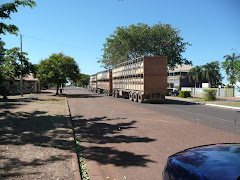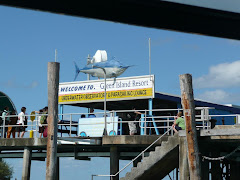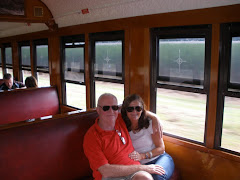This has probably been the biggest break in the blog to date! We do have an excuse. We visited our daughter Elizabeth and her partner Sam in Geraldton and got a bit side-tracked.

Kalbarri is a small beach town at the mouth of the Murchison River. Kalbarri itself is in the throes of a major growth spurt, as are most towns on the Western coast. Tourism is booming, along with mining, and towns like this are riding the wave. Other than the spectacular coastline, beautiful estuary and fantastic fishing, Kalbarri is the stepping-off point for the Kalbarri National Park. Over the millennia, the Murchison has carved deep red gorges into the otherwise flat and seemingly never-ending plains of the WA coast. We did a fantastic 8 km bushwalk through the gorges. It’s rated as a difficult trail, but in the mild weather and with the river fairly low, it was a bit easier than when we did it a few years back. Or are we just fitter?

Geraldton was great fun for us to catch up with Lizzie and Sam and their crazy dogs. We have been here before so most of the local sites were not on our agenda. We put in a bit of serious fishing time, with little success and spent a puzzled afternoon watching Sam play Aussie Rules. We just don’t understand the game, but Sam seemed to do a lot of good things - we think?
A real surprise awaited us just outside Cervantes, about 250km north of Perth. The Pinnacles National Park is an enormous area of re-exposed, eroded limestone seabed, set in yellow sandy soil. In the late afternoon light, the exposed stones looked like a thousand Stonehenges, mixed with drippy sandcastles and demons.

Today, we walked from our caravan park the few kms into Fremantle. The city is, of course, still a major port and industrial centre, but it has been gentrified over the past couple of decades and the container cranes form a backdrop for a very trendy little city centre with street after street of restored 19th century pubs and commercial buildings. One of Australia’s most attractive cities!

As modern cities go, Perth itself is beautiful., set beside the wide estuary of the Swan River and surrounded by parkland. But, as with many cities Australia (and world) wide, it has become a little gentrified - the same shops, the same streetscapes. What must be said for Perth though is that it has fantastic public transport. We are real urban train freaks, no matter where we travel. Perth’s system isn’t the London Underground, but it is efficient, clean and user friendly. What we really love are the free CAT bus services that operate in both Perth City and Fremantle.





















